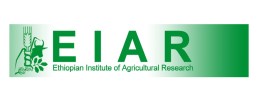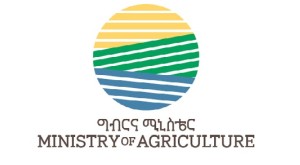Data sharing guideline
Lack of a data-sharing guideline is one of the obstacles in building an agricultural data repository that can support big-data analytics in Ethiopia. Cognizant of this major barrier and affirming that data sharing should be governed by fair and transparent rules, the CoW has developed the first data access and sharing guideline to govern data sharing and access among its members. Lessons from international trends and practices were used to develop the CoW data-sharing guideline. These experiences were customized toward local contexts, challenges, and opportunities to deliver an effective and efficient instrument that will accelerate data access and sharing.
Link to the document : Coalition of the Willing for soil and agronomy data access, management and sharing (cgiar.org)
National soil and Agronomy data ecosystem mapping
Although soil and agronomy data have been collected in Ethiopia since the 1960s, the data are not available in a standard database. In addition, there is no clear information as to where the datasets are and in what format. This inhibited the efficient use of available data to facilitate data-driven solutions for agriculture. A review by the CoW team showed that 71% of the national datasets are available only in analog format or stored on individual computers, thus risking permanent loss. The CoW’s soil and agronomy data mapping and characterization study evaluated available soil and agronomy datasets according to FAIR data principles. The assessment showed that most of the data fulfill minimal reusability standards and fail to meet the requirements of findability, accessibility, and interoperability.
Link to the document: Identifying, cataloguing, and mapping soil and agronomic data in Ethiopia. (cgiar.org)
National data standards guideline
Interoperability of data is a fundamental challenge in the big-data landscape that undermines data-sharing efforts and hinders the optimum use of available data. Different people and organizations collect data using dissimilar and non-compatible methods and formats. The variation in methods, approaches, standards, etc. is employed in the laboratory analysis stage. The soil and agronomy data mapping and characterization exercise has witnessed this gap and challenge. Cognizant the challenges, CoW developed soil and agronomy data standard guideline for the following six thematic areas:
-
Agronomy and soil fertility
Soil survey and characterization
Agricultural water management
Soil biology
Laboratory analysis for soil, water, plant, and fertilizer
Integrated watershed management
Guideline for agronomy and soil fertility data collection in Ethiopia: National standard (cgiar.org)
Guideline for soil biology data collection in Ethiopia: National standard (cgiar.org)
A guide to standardized methods of analysis for soil, water, plant, and fertilizer resources for data documentation and sharing in Ethiopia (cgiar.org)
Legacy soil profile dataset

Up-to-date quantitative digital soil type and properties spatial information is important to support soil-crop-land management. To meet content and spatial soil information demand in Ethiopia, COW experts attempted to identify, catalogue, map out, characterize, and build a database of soil from relevant public, international, federal, regional research, and development institutions in Ethiopia. Through this important work, the COW was able to collate and rescue about 20,000 legacy soil profile data . The data was cleaned and harmonized using the latest soil profile data dataset template and prepared 14,681 profile data for modelling. The collated and curated legacy soil profile however were not interoperable thus difficult to establish in a single dataset. To overcome this limitation, activities are underway to develop functional soil and agronomy database under the big national Agridata hub platform.
Ethiosoil grid version 1.0/Reference Soil Group (RSG) map of Ethiopia

Up-to-date digital soil resources information, and its comprehensive understanding, is crucial to support crop production and sustainable agricultural development. Cognizant of the lack of an up-to-date soil resource map of Ethiopia, the COW collated about 20,000 soil profile data. The data was cleaned and harmonized using the latest soil profile data template and prepared 14,681 profile data for modelling. Accordingly, using the machine learning technique a continuous quantitative digital map of 18 WRB reference soil groups (EthioSoilGrid version 1.0) at 250 m resolution was produced. Following EthioSoilGrids version 1.0 development, a soil atlas of Ethiopia depicting the distribution, characteristics, potentials, and limitations of the soil resources, with various illustrations, has been developed.
Link to EthioSoilGrid 1.0
Soil Atlas of Ethiopia
Ethiopia, land of origins and home of diversity, is characterized by diverse landscapes, climatic, fauna and flora has various soil types with tremendous potential. However, due to a lack of sufficient information on their distribution, potential and limitations, the soil resources of the country are not optimally used. Therefore, CoW supported the development of the soil atlas of Ethiopia to provide basic soil resource information including the major soil types and their distribution using various illustrations.
Soil and Agronomy dataset
Despite the collection of agricultural data in Ethiopia over the last 60 years, there are still enormous soils and agronomy related data scattered across different organizations and only up to 45% of the data holders are willing to share, provided that official request is made, and a centralised digital database containing national soils and agronomy data/metadata is lacking. Consequently, access to soil and agronomy data remains difficult. In response to the challenge, CoW was able to collate and rescue about 39,360 points of crop response to fertilizer data for some major crops across the country. The data was cleaned and harmonized using the latest crop response to fertilizer application dataset template.
Link to dataset
Crop response prediction model

Despite the yield increase observed for many crops (including wheat) in recent years, crop yield gaps remain large in Ethiopia. Low and blanket fertilizer application has long been considered as the main cause of low yields. Thus, there is an increasing need for context and site-specific fertilizer recommendations. Accordingly, an effort is being made by the COW to develop a Crop Response Prediction Model that can be a basis for fertilizer recommendations. The tool can produce yield prediction for a given level of nutrient application at any location of interest considering the climate, soil, and topography of the site. With more data and further improvement, the model can be deployed as an operational tool to guide farmers' investment as it indicates the level of fertilizer they need to apply and as a strategic tool to support the government to provide improved estimation of fertilizer amount to be imported in the upcoming growing season.
Link to the document: A data-mining approach for developing site-specific fertilizer response functions across the wheat-growing environments in Ethiopia | Experimental Agriculture | Cambridge Core
Partners and Founding Organizations
Crop Response to Fertilizer data collected and cleaned
Soil Profiles Collected
Legacy Soil Profiles Extracted and Cleaned
Current number of CoW members




